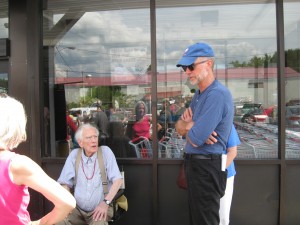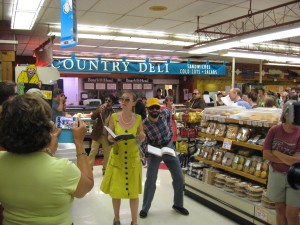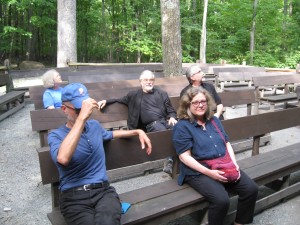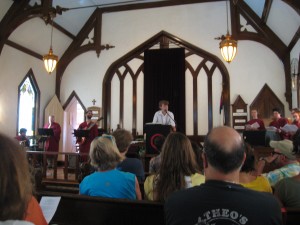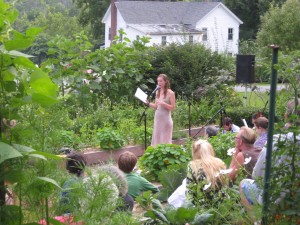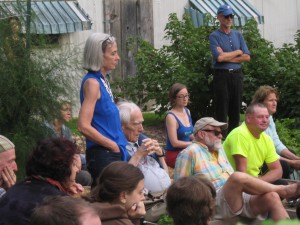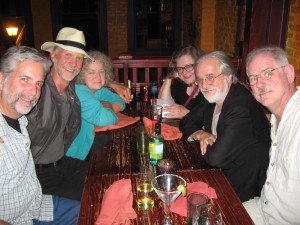I am not a particularly prolific composer, and have always been a little sensitive about it. The sensitivity started in college. In high school I spewed forth inept sonatas and chamber pieces by the ream with a frightening incapacity for self-criticism, and I swept into Oberlin with guns a-blazing. But my undergraduate composition teacher was intimidating and unsympathetic, and after a few months with him I found myself too petrified to compose anything. It took me many years to fully overcome the sense of insecurity that took root in me under his weekly lack of enthusiasm. It is common among a certain type of professor to say that, if a student can be dissuaded from becoming a composer, he should be; but if he can’t be dissuaded and you try for years anyway, the damage can be considerable and long-lasting.
At any rate, later there were other excuses for my relative lack of productivity. I’ve had to work like a dog to make a living all my life. The early years of being a high-profile critic took up a lot of psychic energy; it wasn’t like selling shoes while secretly working out musical plans in my head. And I got into the habit of writing books, which bring me more professional advantage than my music does these days, and writing them is so easy for me that I’m not likely to quit. I am selfish enough that I will deny the world the music I could be writing if I’m getting more jollies somewhere else.
But the real reason for the slow growth in my opus numbers, or probably more real than these other reasons anyway, is that I’m something of a conceptualist with a populist conscience. That is, to get inspired with a piece I need a concept, an idea, some friction of irreconcilables, that applies only to that piece. I do not have a habitual musical language that I can turn on and off like a spigot, or roll out by the yard, as so many composers do. So I get these inspirations like, hey, what if you had a rhythmic structure like this, but a harmonic rhythm that was totally independent of it, and you had to make it work and sound good anyway. Sounding good is the sticking point. I’ve had some compositional ideas I’ve carried around for decades, and I just can’t make them work, so I start a lot more pieces than I finish. And I am not like some of my fellow experimentalists I could name, who will find the concept sufficient and roar ahead with the work whether the listener can afterward tell what what the hell the piece was about or not. I conceive each work in some kind of arcane musical algebra, but if the initial results don’t sound wonderful and seductive, to me, I just won’t go through with it. Sometimes I try the same idea over every few years, and in several cases I’ve eventually figured out how to bring a recalcitrant concept to heel, usually by making my grandiose, austere premises simpler and/or more flexible.
Somehow I got, rather early, the idea that as long as I wrote over a hundred pieces in my career, I would consider that a respectable output. For some reason I did not want to be one of those composers known for their miniscule worklists of only 20 or 35 works: Webern, Varèse, Ruth Crawford, Ruggles, even Nancarrow (65, officially). For one thing, to make an impression with such a small catalogue requires not only a high consistency of quality but a trademark idiom, and I’m a little too variable in style and quality for that. And on the other hand, Beethoven only has 138 opus numbers, and though many of them are multiple works, anything over a hundred sounded vaguely in the ballpark. And some time in the past year, depending on what early works I feel like copping to in any current mood, I passed the one-hundred mark. With the two works I’m finishing up this week – a septet for the Ghost Ensemble called Sang Plato’s Ghost, and a chamber suite called Catskill Set – my official list has 105 titles. I made it!
And neither would I have wanted to be one of those composers who bombards the world with his or her fecundity. Darius Milhaud is one of my favorite composers, but a large percentage of his music sounds phoned in, and past the sixty or so fabulous pieces you quickly run into works that make you wonder why he bothered. Alan Hovhaness, similarly. I’m trying to figure out how much of Kaikhosru Sorabji’s music I really need to get familiar with. Composers like these need someone to write a book covering their complete output and letting all of us know what the gems are. It seems to me that extremely prolific composers create a perceptual barrier for themselves, because nobody after Schubert writes 500 masterpieces, and even a listening fan gets discouraged trying to profitably fill in the complete profile.
So “over a hundred” sounds good, and I can psychically relax a little. Breathes there the composer, today, who doesn’t occasionally stop and reflect that there’s already way too much good music in the world anyway, and that it seems either sadistic or masochistic to continue adding to it? I can keep composing when I’m really enjoying it, without the tad of psychic pressure in the back of my mind that I haven’t yet written enough. My worklist looks sufficiently respectable; a dozen or so of the works exceed a half-hour. And with having passed ten years as a blogger today as well, and finished the five chapters of my Ives book (out of fifteen, six of them already done) that I was determined to write before the semester started, I think that’s enough landmarks achieved for one summer.
REMINDER: Until the domain name transfers, my web site is currently here.



